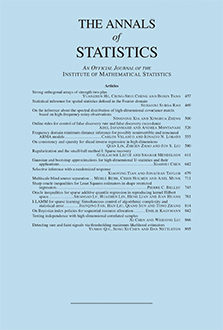Abstract
Space-filling designs based on orthogonal arrays are attractive for computer experiments for they can be easily generated with desirable low-dimensional stratification properties. Nonetheless, it is not very clear how they behave and how to construct good such designs under other space-filling criteria. In this paper, we justify orthogonal array-based designs under a broad class of space-filling criteria, which include commonly used distance-, orthogonality- and discrepancy-based measures. To identify designs with even better space-filling properties, we partition orthogonal array-based designs into classes by allowable level permutations and show that the average performance of each class of designs is determined by two types of stratifications, with one of them being achieved by strong orthogonal arrays of strength 2+. Based on these results, we investigate various new and existing constructions of space-filling orthogonal array-based designs, including some strong orthogonal arrays of strength 2+ and mappable nearly orthogonal arrays.
Funding Statement
Supported by the Natural Sciences and Engineering Research Council of Canada.
Citation
Guanzhou Chen. Boxin Tang. "A study of orthogonal array-based designs under a broad class of space-filling criteria." Ann. Statist. 50 (5) 2925 - 2949, October 2022. https://doi.org/10.1214/22-AOS2215
Information





